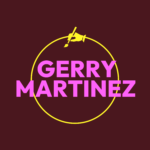
How to Build a Multi-Million Dollar Art Portfolio
The Complete Guide to Long-Term Art Wealth
| Invest in Hidden Masterpiece: Rare Antique Oil Paintings For Sale. Limited Originals Available 💰😊 Are you looking for authentic hidden masterpiece? Explore old master antique oil paintings from the Renaissance and Baroque eras. From 16th-century portraits to 18th-century landscapes. Authenticity guaranteed, Old Master antique oil paintings for sale. Shop Now! 🎨 Renaissance And Baroque Art Landscape Antique Paintings Old Master Portrait Paintings |
The global art market has evolved from an elite pastime into a sophisticated investment ecosystem worth over $65 billion annually. Collectors, investors, and institutions now view art as a legitimate asset class , one that can outperform stocks, real estate, and gold over time. Yet few truly understand how to build a multi-million dollar art portfolio strategically, balancing passion with profit.
In this guide, we’ll explore how to build, manage, and grow an art portfolio that appreciates in value, generates cultural prestige, and endures for generations. From choosing the right artists to navigating the auction market, this is your roadmap to building serious art wealth.
Understanding Art as an Asset Class
Before investing millions into paintings or sculptures, it’s essential to understand what makes art valuable , and how it behaves as an asset.
1. Art Offers Low Correlation to Traditional Markets
Fine art prices typically move independently of stock markets. During economic downturns, many high-net-worth individuals pivot to tangible assets like art. This diversification benefit is why art performs well during inflationary periods and global uncertainty.
2. Scarcity and Cultural Demand Drive Value
Unlike stocks, art isn’t mass-produced. Each masterpiece is unique, often tied to an artist’s reputation, historical significance, and cultural symbolism. When demand for that artist’s work rises , as it often does posthumously , the value can increase exponentially.
3. The Emotional and Prestige Premium
Art carries emotional and social value that traditional investments can’t match. Owning a painting by Jean-Michel Basquiat or Yayoi Kusama isn’t just about returns , it’s about cultural identity, legacy, and global recognition.
Define Your Art Investment Strategy
Every successful art portfolio begins with a clearly defined investment thesis. This sets the tone for how you’ll allocate capital, manage risk, and pursue returns.
A. Decide Between Passion or Profit , or Both
Some collectors buy art because they love it; others buy it purely for financial gain. Ideally, you strike a balance: invest in art that emotionally resonates with you but also has market potential.
B. Choose Your Investment Horizon
Art is a long-term game. While some pieces appreciate within five years, the most significant gains often occur over decades. Ask yourself:
Are you building generational wealth?
Are you seeking liquidity within 10 years?
Are you willing to hold through market cycles?
C. Diversify by Artist, Era, and Medium
Diversification protects your portfolio against volatility. Consider blending:
Blue-chip artists (Picasso, Warhol, Rothko)
Mid-career artists gaining institutional recognition
Emerging talents with rising auction activity
A mix of mediums: painting, sculpture, photography, and digital art (NFTs)
Master the Art Market Ecosystem
The art world operates differently from traditional financial markets. It’s driven by relationships, curators, and opaque pricing systems. Understanding how value is created is critical.
A. Primary vs. Secondary Market
Primary Market: Directly from galleries or artists. Prices are usually lower, but liquidity is limited.
Secondary Market: Through auctions, private dealers, or resales. Here, artworks with proven demand trade hands for higher prices.
B. The Role of Galleries and Art Dealers
Galleries represent artists and manage supply to control pricing. Cultivate relationships with reputable galleries , access to high-demand artists often depends on your collector credibility.
C. Auction Houses and Art Fairs
Top-tier auction houses like Sotheby’s, Christie’s, and Phillips set benchmark prices. Meanwhile, international art fairs such as Art Basel, Frieze, and TEFAF showcase investable works and emerging artists. Attending these events helps you understand pricing trends, collector sentiment, and global demand.
Build Your Acquisition Framework
A successful multi-million dollar portfolio requires discipline in sourcing, vetting, and acquiring artworks.
A. Conduct Provenance and Authenticity Checks
Provenance , the documented history of an artwork , directly impacts its value. Always verify:
Artist certificates of authenticity
Exhibition and publication records
Previous ownership history
Gallery and auction documentation
Counterfeits are rampant, even in reputable markets. Consider hiring a professional art appraiser or authenticity expert.
B. Analyze the Artist’s Market Trajectory
Look at:
Past auction results (via Artnet, Sotheby’s, or Artprice)
Institutional representation (museums, biennales)
Critical reviews and awards
Gallery waiting lists and exhibition frequency
A rising trajectory often signals strong long-term potential.
C. Leverage Data and Analytics
Platforms like ArtRank, ArtTactic, and Masterworks Insights provide analytics on artist market trends, growth rates, and volatility. Use these tools to quantify art market performance, similar to stock or real estate metrics.
Establish a Budget and Capital Allocation Plan
To build a multi-million dollar art portfolio, strategic budgeting is essential. The key is to structure your spending like a professional investor.
A. Allocate Capital by Risk Tier
A typical art portfolio might look like this:
40% Blue-Chip Art (low risk, stable returns)
35% Mid-Career Artists (moderate risk, strong growth potential)
20% Emerging Artists (high risk, high upside)
5% Alternative Assets (NFTs, art funds, fractional shares)
B. Set Annual Acquisition and Maintenance Budgets
Owning art incurs ongoing expenses , insurance, storage, restoration, transportation, and exhibition fees. Allocate 1–3% of portfolio value annually to maintenance.
C. Consider Fractional Art Investing
If you’re not yet ready to buy a $5 million Basquiat, platforms like Masterworks or Yieldstreet allow fractional ownership of high-value art. This democratizes access and builds exposure to top-tier artists with minimal capital.
Storage, Insurance, and Conservation
Your portfolio’s longevity depends on proper preservation. Improper storage can destroy millions in potential value.
A. Climate-Controlled Storage
Art must be stored in temperature- and humidity-controlled facilities. Avoid direct sunlight, rapid temperature changes, and pollution exposure. Specialized storage firms like UOVO or Crozier Fine Arts provide museum-grade protection.
B. Insurance Coverage
Use specialized art insurance providers such as AXA Art or Chubb. Coverage should include theft, fire, transit damage, and natural disasters. Update valuations annually to reflect market appreciation.
C. Professional Conservation
Engage professional conservators to clean, repair, and maintain your pieces. Even minor restorations can enhance both aesthetic and market value when done properly.
Build a Network and Reputation in the Art World
In art investing, your network is as valuable as your collection. Visibility, trust, and credibility determine access to deals and insider opportunities.
A. Engage with Galleries and Advisors
Develop long-term relationships with art advisors, curators, and gallerists. Advisors can guide acquisitions, negotiate prices, and authenticate works.
B. Attend Art Fairs and Auctions
Networking at Art Basel, Frieze London, or Armory Show exposes you to new artists and collectors. Relationships built at these events often lead to private sales or early access to in-demand works.
C. Build Your Collector Brand
Top collectors are known entities. Create a digital presence , a website or Instagram showcasing your collection , to establish yourself as a serious investor and cultural contributor.
Track Performance and Reappraise Regularly
An art portfolio requires active management and continuous evaluation to maximize returns.
A. Conduct Annual Appraisals
Hire certified appraisers to update valuations. Many insurers and wealth managers require appraisals every 12–24 months.
B. Use Art Portfolio Management Software
Platforms like Collector Systems, Artlogic, or ArtBase allow digital cataloging of artworks, provenance, valuation history, and insurance records.
C. Benchmark Against Market Indices
Compare your portfolio’s appreciation against indices like the Artprice100 or Mei Moses Fine Art Index. These benchmarks help measure relative performance versus global market trends.
Plan for Liquidity and Exit Strategies
Art is an illiquid asset , selling can take months or years. Smart investors plan exit strategies well in advance.
A. Auctions as Exit Channels
High-profile auctions provide liquidity but charge hefty fees (10–25%). Timing is crucial , selling during hype cycles or artist retrospectives can yield record results.
B. Private Sales and Galleries
Private dealers or gallery buybacks often offer confidentiality and faster transactions, though prices may be slightly lower than at auction.
C. Fractionalization and Art Funds
In recent years, fractionalization platforms have enabled collectors to sell shares of artworks while retaining partial ownership. This hybrid liquidity approach lets investors unlock capital without fully divesting.
Legal, Tax, and Estate Planning Considerations
Art wealth requires careful legal structuring to minimize taxes and preserve legacy.
A. Capital Gains and Taxation
When selling, capital gains taxes apply based on your jurisdiction. Consult an art tax specialist , some countries offer tax incentives for art donations or deferred gains via trusts.
B. Estate Planning and Art Trusts
Include art assets in your estate plan. Set up art trusts to manage transfers, avoid probate complications, and maintain long-term collection integrity.
C. International Transactions and Customs Laws
Art traded across borders must comply with export/import laws, cultural heritage regulations, and anti-money laundering rules. Work with experienced art lawyers to navigate compliance safely.
Leverage Art for Income and Influence
A multi-million dollar art portfolio isn’t just a store of value , it can generate income, influence, and philanthropic opportunities.
A. Loan Artworks to Museums
Museums often pay exhibition fees or cover insurance when borrowing works. Public display also increases the artwork’s prestige and value through institutional validation.
B. Monetize Through NFTs and Digital Rights
Digital authentication via blockchain can create secondary income streams from limited-edition digital prints or NFTs tied to physical artworks.
C. Build Cultural Influence
Owning and displaying iconic works builds influence in art circles, politics, and business. Many ultra-wealthy collectors use art to cement their legacy and global visibility.
Learn from the World’s Top Collectors
Studying how billionaire collectors operate offers valuable insights into portfolio-building strategies.
A. François Pinault (Founder of Kering)
Pinault’s collection of over 5,000 works spans from Picasso to Koons. He built his empire by combining strategic acquisitions with public museum displays, increasing both prestige and valuation.
B. Eli Broad (Broad Museum, Los Angeles)
Broad treated art as a public investment, lending his collection widely. His approach demonstrates how transparency and public engagement elevate an artwork’s cultural and financial worth.
C. Charles Saatchi
Saatchi revolutionized the art market by backing emerging artists like Damien Hirst early on. His risk-taking approach shows how early entry into emerging talent can lead to massive long-term gains.
Stay Ahead of Art Market Trends
To build a multi-million dollar portfolio, you must anticipate shifts before they hit mainstream collectors.
A. Watch Global Art Hubs
Cities like Hong Kong, Seoul, and Dubai are reshaping global art demand. Tracking regional collectors and galleries helps identify new hotspots for appreciation.
B. Follow Institutional Endorsements
When major museums acquire an artist’s work, prices usually rise. Monitor acquisitions and exhibitions at MoMA, Tate Modern, and Guggenheim.
C. Embrace Technology and AI
AI-based valuation tools and blockchain authentication systems are modernizing art investment. Stay informed to ensure your portfolio remains transparent, secure, and future-proof.
The Long-Term Vision: Building a Legacy Through Art
Building a multi-million dollar art portfolio is not just about wealth , it’s about creating a lasting cultural footprint. Unlike stocks or real estate, art embodies creativity, history, and identity. A thoughtfully curated collection tells a story that transcends generations.
When done right, your portfolio becomes both a financial fortress and a legacy of meaning , a reflection of your vision, taste, and influence in the global art world.
Key Takeaways
Treat art as a long-term, illiquid investment with emotional and financial rewards.
Diversify across artists, eras, and risk tiers.
Protect value with proper insurance, storage, and documentation.
Cultivate relationships with galleries, advisors, and institutions.
Continuously track market trends and performance metrics.
Incorporate art into tax and estate planning strategies.
Building a multi-million dollar art portfolio isn’t about luck , it’s about strategy, discipline, and education. Whether you’re a seasoned investor or an aspiring collector, mastering the art market can transform creativity into capital, passion into profit, and vision into legacy.




